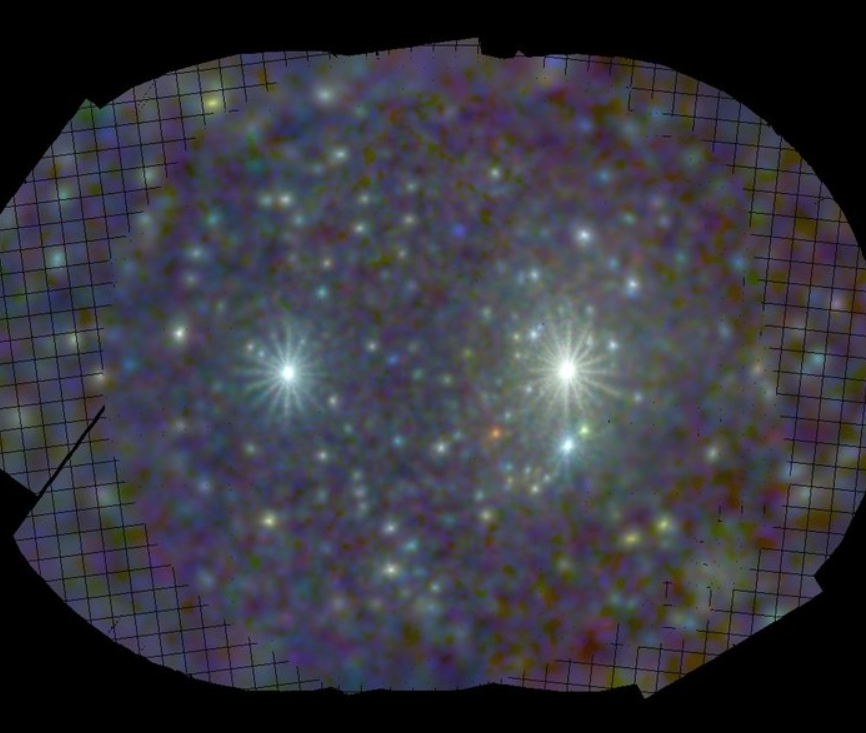
A very important process in observational astronomy is to carefully subtract the background noise from an image taken by an X-ray telescope. This background noise may come from background photons, i.e., photons not associated with the source that is being observed or artefacts from the telescope itself. For that purpose, scientists develop software tools that are used to analyse observations taken by X-ray telescopes.
The XMM-Newton Extended Source Analysis package (XMM-ESAS) is software that has been developed to analyse observations taken by ESA’s XMM-Newton telescope. The software models and removes the background noise as well as it merges and smooths observations taken from the three X-ray cameras onboard the XMM-Newton satellite.
In the image above, the star-like structure on the right corresponds to the spiral galaxy M81, while the feature on the left comes from the dwarf galaxy Holmberg IX. The image shows that there is a bright point at the centre of M81, which comes from the galaxy’s active supermassive black hole. The ‘rays’ extending from the point sources are artefacts, seen whenever there is a very bright source in the field of view.
By examining images like these, along with complementary images taken at other wavelengths, scientists can get a quick look at the structure of the object and the spectral variations across the field.
Source: XMM-Newton
